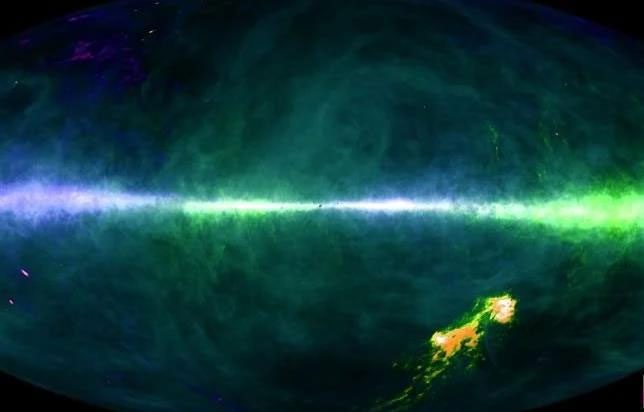Scientists have discovered that there are points in our Milky Way galaxy that resemble deep holes, long and slender tunnels.
A recently published study in Astronomy & Astrophysics indicates that these mysterious and gigantic holes may actually be remnants of supernovae, the “ghostly imprints” that could help record the history of the galaxy containing Earth and its stars.

Neutral atomic hydrogen map in the Milky Way galaxy – (Photo: HI4PI)
Supernovae are the explosive end of stars. When a star like our Sun ages, it gradually exhausts its energy, eventually swelling up one last time in its death throes, transforming into a red giant. Afterward, the star collapses into a “zombie” form known as a white dwarf, an object only the size of Earth but still as heavy as the Sun.
After a period, the white dwarf continues to collapse again: It erupts brilliantly in an event known as a supernova, releasing many elements, including rare ones. The material from these supernovae can continue to be reborn in other star systems.
However, first and foremost, supernovae leave behind vast voids long after they explode.
This is a serendipitous discovery from a study on neutral atomic hydrogen permeating the galaxy containing Earth, titled HI4PI, led by Dr. Juan Diego Soler from the National Institute for Astrophysics in Italy (INAF).
Neutral hydrogen is the fundamental material in diffuse clouds of matter, where young star systems can be born, and it is also what supernovae return in abundance when they explode and the aging star dies, in the form of fine, hollow “hair-like” strands of gas, with lengths reaching up to 33,000 light-years.
These findings could pave the way for future exploratory missions aimed at recreating the history of the galaxy containing Earth and how it has evolved to this day. Most importantly, the study also highlights the principle of “life begins with death” in the universe.
“The linkage of supernovae is very effective in maintaining turbulence and uplifting gas in a stratified disk. Finding these filamentary structures in neutral hydrogen is a significant step in understanding the processes responsible for galaxy-scale star formation,” said astronomer Patrick Hennebelle from the Saclay Nuclear Research Center in France, a member of the research team, as reported by Science Alert.





















































